#Pantanal National Park
Explore tagged Tumblr posts
Text

Giant otter is eating fish in water, Pantanal National Park, Brazil, 2018 - by Andrey Gudkov, Russian
90 notes
·
View notes
Text
#africa#animals#biodiversity#brazil#candice gaukel andrews#climate change#conservation#elephants#endangered species#environment#forests#giraffes#global warming#grasslands#hippos#national parks#natural habitat adventures#nathab#nature#pantanal#rewilding#salmon#science#science and environment#scientific research#termites#wetlands#wildlife#wolves#world wildlife fund
0 notes
Text
— Recent giant anteater sightings in Rio Grande do Sul state indicate the species has returned to southern Brazil, where it had been considered extinct for more than a century.
— Experts concluded that the giant anteater ventured across the border from the Iberá Park in northeastern Argentina where a rewilding project has released around 110 individuals back into the habitat.
— The sightings emphasize the importance of rewilding projects, both to restore animal populations in specific regions and help ecosystems farther afield.
— Organizations across Brazil are working to protect and maintain current giant anteater populations, including rallying for safer highways to prevent wildlife-vehicle collisions that cause local extinctions.
Playing back hours of footage from a camera trap set in Espinilho State Park in the south of Brazil in August 2023, Fábio Mazim and his team banked on possible sightings of the maned wolf or the Pantanal deer and had their fingers crossed for a glimpse of a Pampas cat (Leopardus pajeros), one of the most threatened felines in the world.
What they didn’t expect to see was an animal long presumed extinct in the region. To their surprise, the unmistakable long snout and bushy tail of a giant anteater ambled into shot.
"We shouted and cried when we saw it,” the ecologist from the nonprofit Pró-Carnívoros Institute told Mongabay. “It took a few days to grasp the importance of this record. A sighting of a giant anteater was never, ever expected.”
Last seen alive in the southwest of the Rio Grande do Sul state in 1890, the giant anteater (Myrmecophaga tridactyla) has since been spotted 11 times since August 2023, although the scientists are unsure whether it’s the same one or different individuals. However, the sightings confirm one clear fact: The giant anteater is back.
It's a huge win for the environment. Giant anteaters play an important role in their ecosystems, helping to control insect numbers, create watering holes through digging and are prey for big cats such as jaguars and pumas.
The habitat of the giant anteater stretches from Central America toward the south cone of Latin America.
Its conservation status is “vulnerable,” although it is considered extinct in several countries, including El Salvador, Guatemala and Uruguay, as well as specific regions such as the states of Rio de Janeiro, Espirito Santo, Santa Catarina and (until now) Rio Grande do Sul in Brazil and the Cordoba and Entre Rios regions in Argentina.
In the last six months, the giant anteater was spotted on camera 11 times in the Espinilho State Park in the state of Rio Grande do Sul in Brazil. It was the first time in 130 years that the species has been seen alive there.
Yet not only is it a triumph for conservationists to see these animals returning to Brazilian biomes, it’s also a surprising mark of success for a rewilding program about 150 kilometers (93 miles) away in neighboring Argentina.
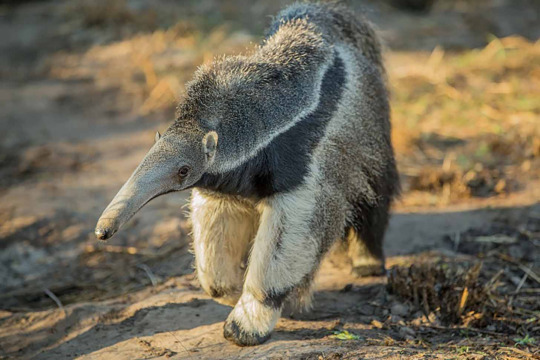
Rewilding Argentina’s biomes
Iberá National Park in Corrientes province in northeastern Argentina is a 758,000-hectare (1.9 million-acre) expanse of protected land comprising a part of the Iberá wetlands with its swaths of grasslands, marshes, lagoons and forests. The region was once home to just a handful of giant anteaters after habitat loss, hunting and vehicle collisions decimated the population.
Since 2007, the NGO Rewilding Argentina, an offspring of the nonprofit Tompkins Conservation, has been reintroducing the species back to the area, most individuals being orphaned pups rescued from vehicle collisions or poaching.
So far, they have released 110 giant anteaters back into the wild. Nowadays, several generations inhabit the park, transforming it from “a place of massive defaunation to abundance,” Sebastián Di Martino, director of conservation for Rewilding Argentina, was quoted as saying in an official statement.
The project has been so successful that the giant anteaters appear to be venturing farther afield and moving to new territories beyond national borders, such as Espinilho State Park in Brazil’s Rio Grande do Sul region...
Experts now hope that a giant anteater population can reestablish itself naturally in Espinilho State Park without the need for human intervention.
“The giant anteater returning to Rio Grande do Sul shows the success of the work done in Argentina and how it’s viable, possible and important to do rewilding and fauna reintroduction projects,” Mazim said. “It is also an indication that the management of conservation units and also the agricultural areas of the ecosystems are working,” he added. “Because if large mammals are coming from one region and settling in another, it is because there is a support capacity for them. It is an indication of the health of the environment.”
-via GoodGoodGood, via May 25, 2024
#anteater#giant anteater#brazil#brasil#argentina#rewilding#conservation#conversation news#nature#biodiversity#environment#ecosystem#ecology#good news#hope
616 notes
·
View notes
Text


Trapped and radio-collared as part of a carnivore study in Emas National Park with The Jaguar Conservation Fund.
Pantanal Cat (Melanistic) | Marc Faucher
19 notes
·
View notes
Text
Green shoots spring from ashes in Brazil's fire-resistant savanna
Cerrado, which is less well-known than the neighbouring Amazon and Pantanal wetlands, has a superpower: over millions of years, it has developed some resistance to flames and high temperatures

The huge wildfires that ripped through Brazil recently did not spare its vast tropical savanna, but green shoots are already emerging from the ashes there, proof of the vast grasslands' rare gift for fire resistance.
The Cerrado, the most species-rich savanna in the world, covers some two million square kilometers of land (770,000 square miles) in central Brazil—nearly one-fifth of the country's entire surface area.
In Brasilia National Park, on the outskirts of the nation's capital, blackened soil and charred tree trunks stand testimony to the ferocity of a fire that ripped through 1,470 hectares (3,600 acres) of land in September.
Brazil was then in the throes of a record drought—the city of Brasilia had gone 169 days without a drop of rain—which lit the torch under the worst wildfire season in over a decade, blamed by experts at least partly on climate change.
But the Cerrado, which is less well-known than the neighboring Amazon and Pantanal wetlands, has a superpower: over millions of years, it has developed some resistance to flames and high temperatures.
Continue reading.
#brazil#brazilian politics#politics#environmentalism#cerrado#image description in alt#mod nise da silveira
2 notes
·
View notes
Text

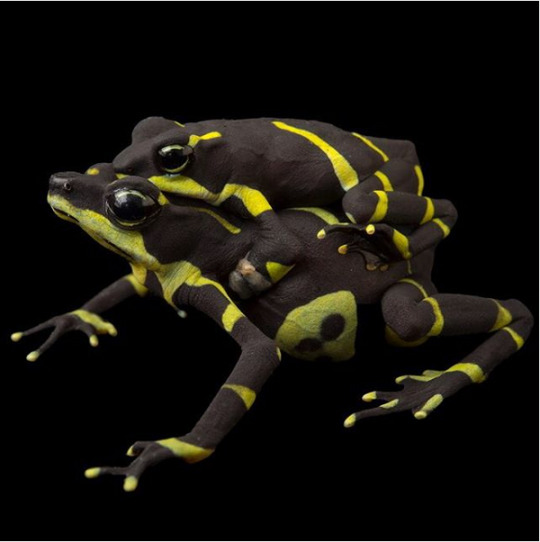

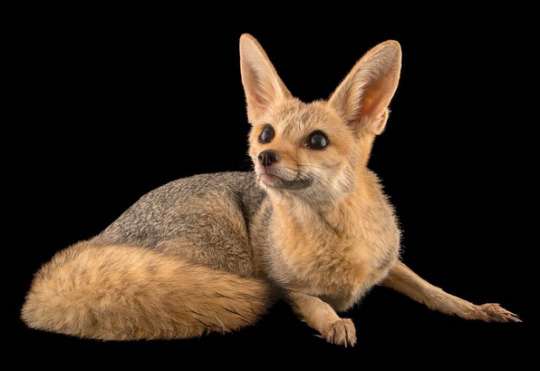
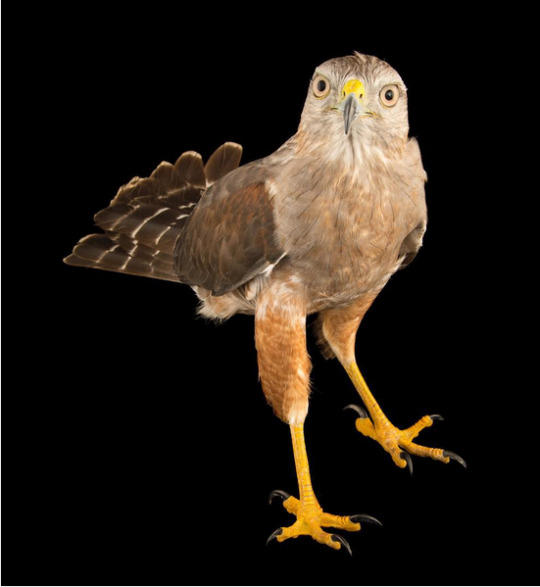

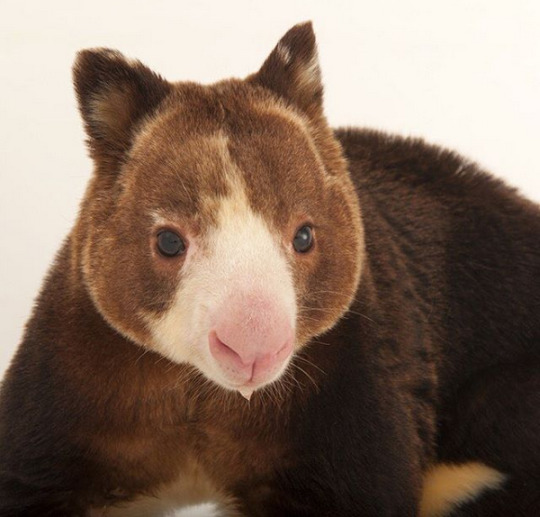

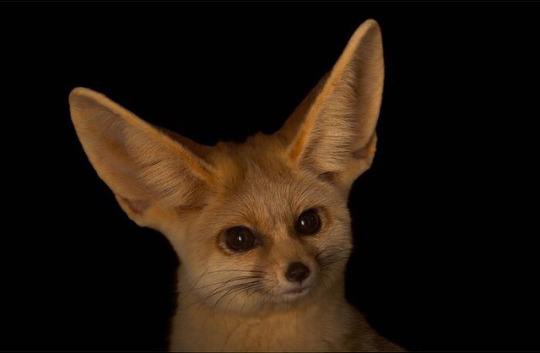
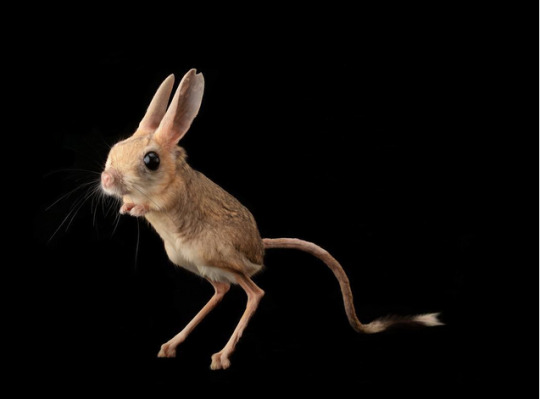
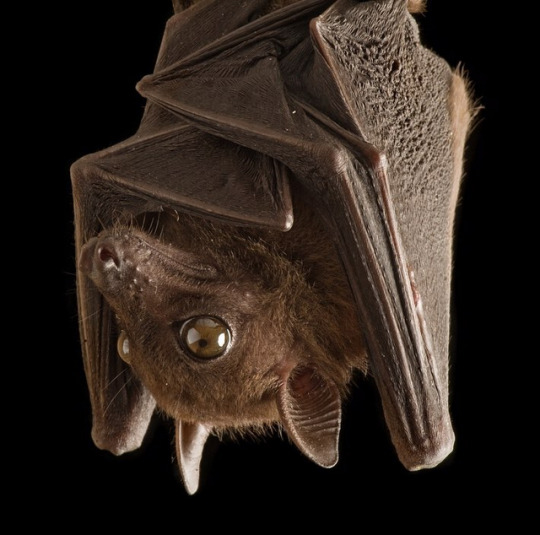
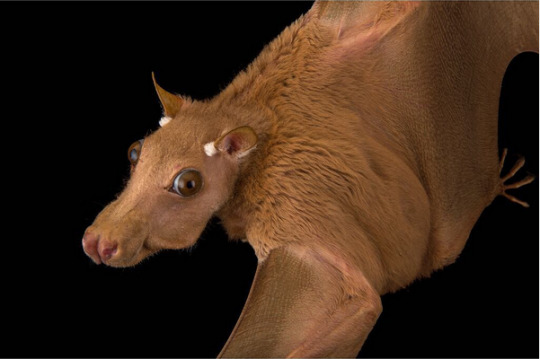
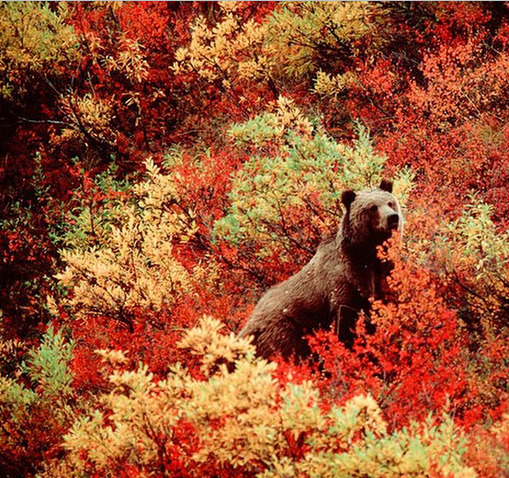
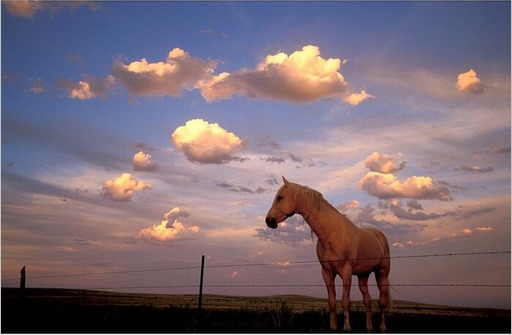

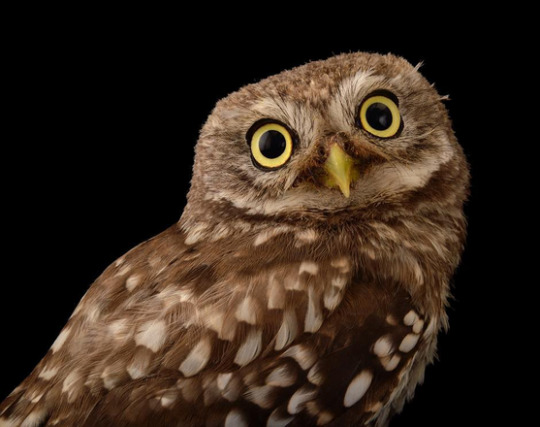
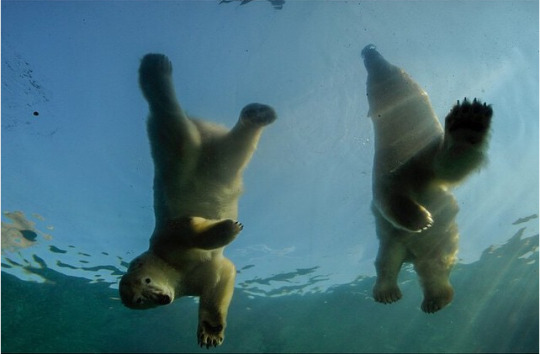

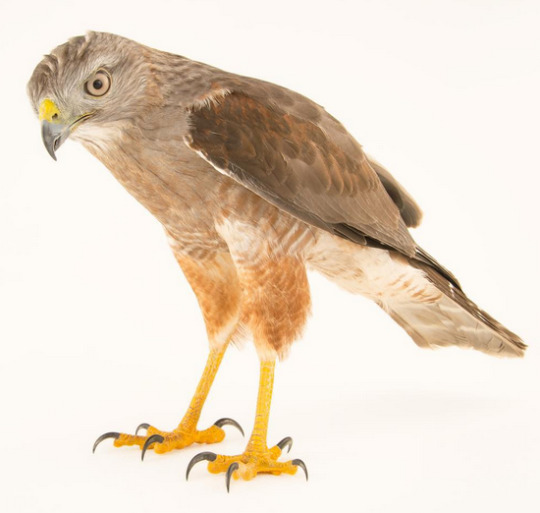
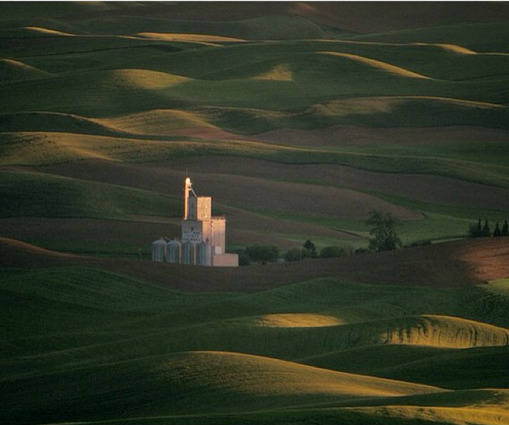

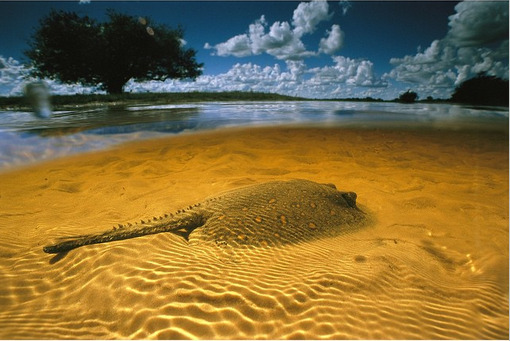
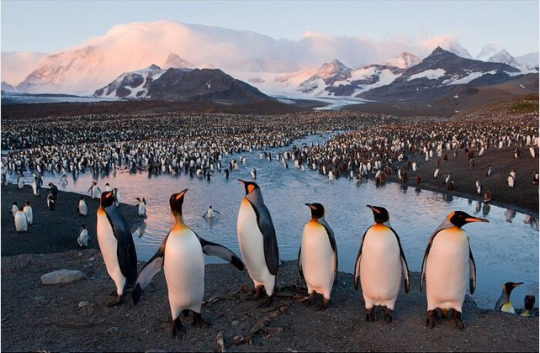
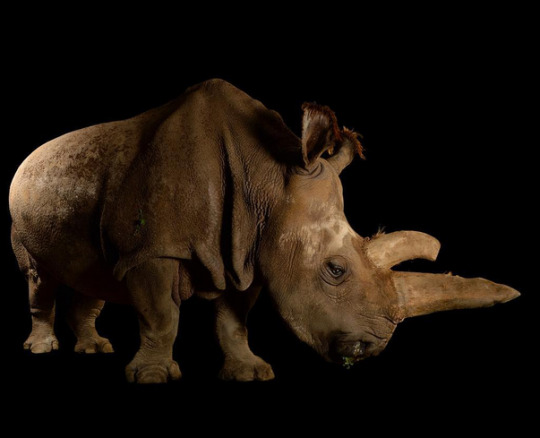

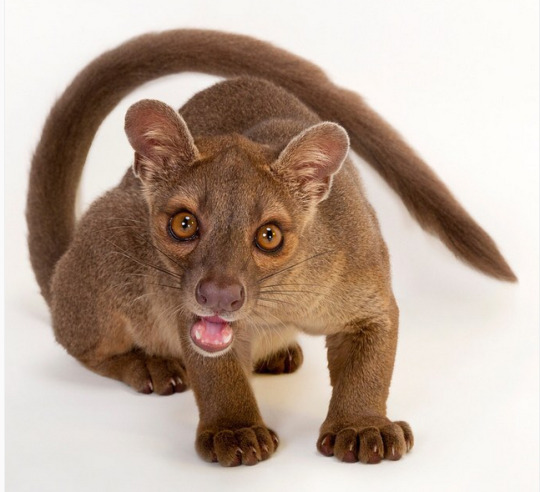
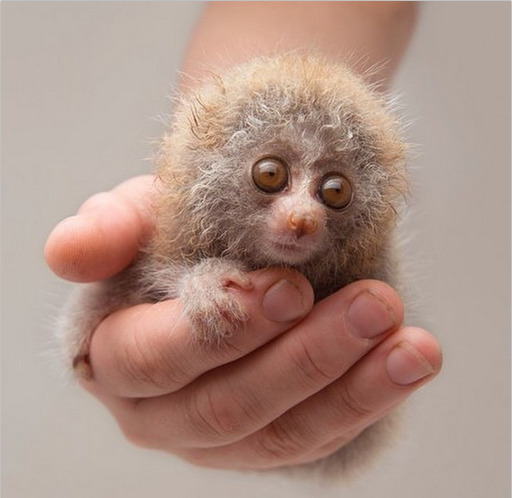
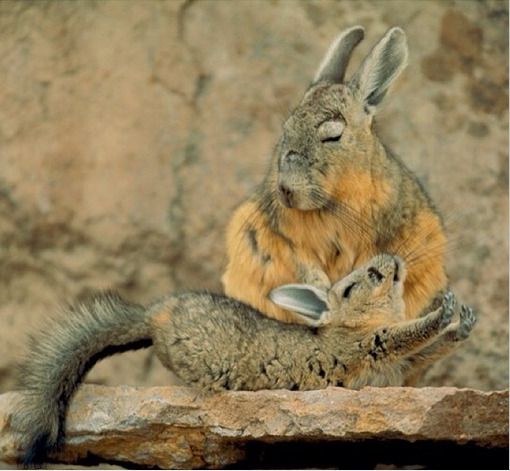


Photos and texts: @joelsartore
1-. A bobtail squid at the Monterey Bay Aquarium
2-. A breeding pair of endangered Limosa harlequin frogs at the Panama Amphibian Rescue and Conservation Project
3-. A brown-throated sloth at the PanAmerican Conservation Association in Gamboa, Panama
4-. A Cape fox at the Plzen Zoo in the Czech Republic
5-. A critically endangered Ridgeway's hawk from my trip to the Dominican Republic
6-. A critically endangered, six-week-old female baby gorilla at the Cincinnati Zoo
7-. A endangered Matschie's tree kangaroo at the Lincoln Children's Zoo
8-. A federally endangered yellow-footed rock wallaby at Omaha Zoo's Wildlife Safari Park
9-. A fennec fox named Sophie at Chattanooga Zoo
10-. A four-toed jerboa at the Plzen Zoo in the Czech Republic
11-. A fruit bat from Bioko Island, Equatorial Guinea
12-. A Gambian epauletted fruit bat at the Plzen Zoo in the Czech Republic
13-. A grizzly bear in fall color at Denali National Park, in Alaska's interior
14-. A horse at the Sandal Ranch near Howes, South Dakota
15-. a kinkajou at the New York State Zoo. This animal is naive to Central and South America
16-. A little owl from the Budapest Zoo
17-. Polar bears at the Columbus Zoo
18-. Rajah, an endangered male, white Bengal tiger at Alabama Gulf Coast Zoo
19-. Ridgeway's hawk
20-. The view of the Palouse hills as seen from Steptoe Butte in eastern Washington
21-. Twin three month old red pandas at the Lincoln Children's Zoo
22-. a freshwater stingray lies partially hidden in the sand of a flooded country road in Brazil's Pantanal
23-. A king penguin rookery from South Georgia Island's St. Andrews Bay
24-. Nabire, one of just five northern white rhinos left on the planet. RIP
25-. jaguarundi
26-. A 1-year-old fossa as the Omaha Zoo. This is Madagascar's largest mammalian predator, and its numbers are declining in the wild
27-. a 24 day-old bengal slow loris at the Endagered Primate Rescue Center in Vietnam. Is named Captain Hook, because he is missing a hand
28-. baby viscacha stretches out after a nap with mom in Chile's Atacama Desert
29-. A black swallowtail butterfly, wich is native to Nebraska, at the Lincoln Children's Zoo
3 notes
·
View notes
Text
The 2016 Great Smoky Mountains wildfires claimed at least 14 lives, and injured 190 people. The fires impacted the towns of Pigeon Forge and Gatlinburg, both near Great Smoky Mountains National Park. The fires are considered one of the largest natural disasters in Tennessee history.
The 2018 California wildfires had a total of 103 confirmed fatalities. The Camp Fire, which occurred in Paradise, California, killed 85 people and destroyed more than 18,000 buildings. The Camp Fire was the costliest disaster worldwide in 2018. It was also the deadliest and most destructive wildfire in California's history.
The Australian bushfires of 2019-2020 directly killed 33 people and over one billion native animals. The fires also caused 417 human deaths due to smoke inhalation. The fires burned in six states across six months, affecting 80% of the Australian population.
In 2020, 33 people died in California wildfires that burned 4.2 million acres, a state record. This was the third deadliest year for California wildfires since 2013.
Amid the bleakness of 2020, scientists in Brazil concluded a particularly grim conservation study - attempting to count the animals killed by huge wildfires in the Pantanal wetlands. They estimate that as many as 17 million vertebrates - including reptiles, birds and primates - died. Wildfires burned between January and November, destroying 30% of the world's largest tropical wetland.
Five people have died from wildfires in Canada in 2023. The wildfires have scorched at least 11 million hectares, or over 27.1 million acres, of land across Canada this year.
Meanwhile, in Maui, wildfires started on August 8th, 2023 (Now August 15th, 2023).
The death toll from the wildfires on the Hawaiian island of Maui is at least 101 people. The wildfires destroyed the historic town of Lahaina and killed at least 99 people, making it the worst natural disaster in state history and the deadliest U.S. wildfire in over a century. Officials warn that the death toll is likely to rise. Many people remain missing.
None of this is okay, and I'm not trying to compare trauma, but the fact that this disaster is happening right now and I have seen a total of 2 posts about it on my dash is disheartening, to say the least.
P.S. Spread the word. Do not ignore Maui.
3 notes
·
View notes
Note
Hiya! Messaging to request some fc suggestions please? Needing help finding an fc for my character who will is very southern gothic, Ethel chain's Preacher's Daughter album, bones & all and southern blues inspired, I imagine her as dark haired and between ages of 25 to mid 30s - all ethnicities/races/genders come but if you don't mind me specifying , can I ask for only actors to be listed please? Aka no influences, singers or models etc - thank you so so much in advance!!!
Southern gothic, Ethel cain fc request here again sorry!! Forgot to add but if you don't mind me adding - also ideally someone who gives off messy/haphazard vibes please?? Kinda like they're obviously on the road a lot so have a permanent grease vibe?? So sorry if that's too specific and apologies again for adding this bug again tysm in advance!!!
Annabelle Wallis (1983) - Malignant.
Diane Guerrero (1986) Colombian - Doom Patrol.
Jodi Balfour (1987) - Quarry.
Courtney Bandeko (1988) Nigerian - Legacies.
Ritu Arya (1988) Indian - Lady Parts, Polite Society.
Nadia Hilker (1988) Tunisian / German - in The Walking Dead.
Nico Tortorella (1988) - is genderfluid, poly, pansexual and demisexual (any pronouns) - Fear The Walking Dead.
Rob Raco (1989) - Riverdale.
Hannah John-Kamen (1989) Nigerian / Norwegian - Resident Evil.
Michael Vlamis (1990) 37.5% Lebanese 25% Greek 25% Serbian 12.5% English - Roswell: New Mexico.
Emory Cohen (1990) - Lords of Chaos.
Kiowa Gordon (1990) Hualapai, English, Scottish, Danish, Manx - Blood Quantum.
Sarah Kameela Impey (1991) Indo-Guyanese / British - iWe Are Lady Parts.
Vico Ortiz (1991) Puerto Rican - non-binary (they/them) - Our Flag Means Death.
Joe Keery (1992) - Stanger Things.
Kiana Madeira (1992) Portuguese / Irish, Unspecified First Nations, Black Canadian - Fear Street.
Hari Nef (1992) Ashkenazi Jewish - is trans - Assassin Nation.
Katerina Tannenbaum (1993) - Betty,
Joseph Quinn (1993) - Stranger Things.
Taylor Russell (1994) Black Canadian / European - Bones and All.
Han Sohee (1994) Korean - My Name.
Lily Sullivan (1994) - Evil Dead Rise.
Sophia Ali (1995) Pakistani / Sicilian Italian, Danish, Norwegian, German - Uncharted, The Wilds.
Sasha Lane (1995) African-American, Māori, English, Scottish, Sorbian, French, Cornish, distant German, Italian, Belgian Flemish, Russian, and Northern Irish - is gay and has schizoaffective disorder - American Honey.
Adeline Rudolph (1995) Korean / German - Chilling Adventures of Sabrina.
Sarah Pidgeon (1996) - The Wilds.
Elliot Fletcher (1996) - is trans masc - Y: The Last Man.
Aria Shahghasemi (1996) Iranian - Legacies.
Archie Renaux (1997) English, Punjabi Indian.
Luka Sabbat (1997) Afro-Haitian, Irish, English, German.
Sydney Park (1997) African-American / Korean - There’s Someone Inside Your House.
Daisy Edgar-Jones (1998) - Where the Crawdads Sing.
Julia Dalavia (1998) Brazilian - Pantanal.
Felix Mallard (1998)
Hey anon! This ask was way harder than it should have been so I hope my followers give you more suggestions because I was struggling! Please keep in mind that some of these just give move around vibes.
4 notes
·
View notes
Note
What are the spots in brazil if you don't mind sharing?
sorry this is so late but here: Parque Nacional dos Lençóis Maranhenses, Fernando de Noronha Marine National Park, Sugarloaf Mountain, Christ the Redeemer, Chapada Diamantina National Park and caving there i think, Iguaçu National Park, Pantanal Wetlands, The Amazon (<- very vague but i'd love to spend some time in ecolodges there or soemthign, maybe Manaus too?). I'd also just love to spend some time surfing on the various beaches, and doing more cultural things in cities and maybe the carnival :)
The place I want to go to most is probably The Amazon or Iguaçu National Park and all the waterfalls there!
I'd love to do the Transcarioca Trail too at some point :)
#if you couldnt tell i like national parks. lol.#but again if u would like to add or have any takes please please let me know i always like learning stuff
2 notes
·
View notes
Text
As night fell on Uganda's second-largest national park in early February, Jacob, a three-legged African lion, made multiple attempts to cross a treacherous waterway with his brother Tiv.Automation never felt so good!Apparently they did so during a retreat: Previously, the brother and sister had wandered into "territories established by other male coalitions" looking for a lioness, only to be "displaced," Griffith University scientist Alexander Blaczkowski told Gizmodo. The lions' underwater journey began in the aftermath of "at least two fights" and after Jacob lost his leg in a poacher's trap.The brothers repeatedly entered the Kazinga Channel in the dark, but turned back three times after "supposedly encountering hippos or Nile crocodiles," Braczkowski and his colleagues write in a forthcoming paper in the journal Ecology & Evolution. On their fourth try, the brothers swam 1.5 kilometers (0.93 miles) and reached the other side.The researchers say lions have made this crossing before, likely for "sexual reasons" and the presence of "strong" humans on the only available land, but this is the first time they've filmed such a swim. "Jacob was in pretty bad shape when he actually made the crossing," Braczkowski added.Braczkowski led the expedition in Uganda's Queen Elizabeth National Park with funding from Queensland, Griffith University in Australia and Northern Arizona University. "It was very dramatic," he said. The New York TimesCommenting on the footage, shot by Cape Town videographer Luke Okusse, he said the lions were "like two little heat signals going across the ocean".The researchers filmed the flight just after 10 p.m. local time using an H20T thermal camera and a DJI Matrice 300 drone, keeping the drone at a distance of 50 to 70 meters (about 200 feet).image: Dr. Alex BratskovskiHumans have recorded African lions making short water excursions, but usually no more than 100 meters (about 0.06 miles), according to the paper. Endangered lions are notoriously poor swimmers. Jaguars, on the other hand, "are well-known to be excellent swimmers in wetlands like the Pantanal and floodplain forests of Brazil," the researchers note.Braczkowski believes an unhealthy sex ratio, caused by poaching and farmers poisoning lions to protect their livestock, may have prompted the crossing. The lead researcher estimates that the park is home to around 60,000 people, "mainly in 11 fishing villages that were demarcated in the 1960s."Beyond Jacob and Tib's quest for sex and territory, the swim reflects "some of the most endangered and iconic wildlife facing difficult decisions under increasing human pressure" on Earth, the researchers write, "such as swimming across rivers and bodies of water where predators are densely concentrated." The biologists conclude their paper by calling for further research into the relationship between long-distance swims by big cats and functional habitat in areas currently dominated by humans.
0 notes
Text
A Wildlife Lover's Guide to the World
As a seasoned traveler and wildlife enthusiast, I've had the privilege of exploring some of the most breathtaking destinations on Earth. From the vast plains of Africa to the lush rainforests of the Amazon, each place has offered unique and unforgettable encounters with the animal kingdom. In this post, I'll share my top picks for wildlife-rich destinations, along with tips and insights to help you plan your own adventure.
Africa: The Motherland of Wildlife
Africa, a continent renowned for its diverse landscapes and rich cultural heritage, is also a wildlife lover's paradise. Here are a few of my favorite destinations:
Kenya: Known for its iconic Great Migration, Kenya offers unparalleled opportunities to witness herds of wildebeest, zebras, and gazelles traversing vast plains. The Maasai Mara National Reserve is a must-visit for any safari enthusiast.

Tanzania: Tanzania's Serengeti National Park is another world-famous safari destination, boasting incredible wildlife diversity and stunning scenery. The Ngorongoro Crater, a UNESCO World Heritage Site, is home to a wide range of animals, including lions, elephants, and rhinos.
Botswana: For a more intimate and exclusive safari experience, consider Botswana. The Okavango Delta, a UNESCO World Heritage Site, is a unique wetland ecosystem teeming with wildlife, including elephants, hippos, and crocodiles.
South America: A Biodiversity Hotspot
South America is home to some of the world's most diverse ecosystems and incredible wildlife. Here are a few highlights:
Amazon Rainforest: The Amazon is the largest rainforest on Earth and a biodiversity hotspot. Explore the dense jungle and encounter exotic creatures like jaguars, monkeys, and colorful birds.

Galapagos Islands: Located off the coast of Ecuador, the Galapagos Islands are renowned for their unique and endemic species. Witness sea lions, giant tortoises, and marine iguanas in their natural habitats.
Pantanal: This vast wetland in Brazil, Bolivia, and Paraguay is a great place to spot jaguars, caimans, and a variety of bird species.
Asia: A Land of Extremes
Asia offers a wide range of wildlife experiences, from dense jungles to snow-capped mountains. Here are a few destinations to consider:
India: India is home to a diverse range of wildlife, including tigers, elephants, and rhinoceroses. Visit national parks like Jim Corbett, Ranthambore, and Kaziranga for the best chances of spotting these magnificent creatures.

Borneo: This island in Southeast Asia is known for its orangutans, as well as other primates, reptiles, and birds. Explore the dense rainforests and support conservation efforts to protect these endangered species.
Siberia: For a truly unique experience, head to Siberia to witness the incredible wildlife of the Russian Far East. Spot polar bears, reindeer, and other arctic animals in their natural habitat.
North America: A Continent of Wildlife
North America offers a variety of wildlife experiences, from the rugged mountains of the west to the coastal forests of the east. Here are a few destinations to consider:
Yellowstone National Park: This iconic park is home to grizzly bears, wolves, bison, and other large mammals. Explore the geysers, hot springs, and stunning landscapes while keeping an eye out for wildlife.
Alaska: Alaska is a wildlife lover's paradise, with opportunities to see bears, moose, whales, and other marine mammals. Take a cruise to the Inside Passage or explore the wilderness by land or air.

Canada: Canada's national parks offer a variety of wildlife experiences, from polar bears in the Arctic to grizzly bears and moose in the Rockies. Visit Banff, Jasper, and Yoho National Parks for breathtaking scenery and wildlife encounters.
Australia: A Land Down Under
Australia is home to a unique and diverse range of wildlife, including many species found nowhere else on Earth. Here are a few highlights:
Great Barrier Reef: The world's largest coral reef system is home to a dazzling array of marine life, including colorful fish, sea turtles, and sharks. Snorkel or dive to explore this underwater wonderland.
Uluru (Ayers Rock): This iconic sandstone monolith is surrounded by a vast desert landscape and is home to a variety of kangaroos, wallabies, and birds.

Tasmania: This island state offers a unique wilderness experience, with opportunities to see wombats, Tasmanian devils, and other endemic species.
Tips for Wildlife Travel
Research your destination: Learn about the local wildlife, their habitats, and the best time of year to visit.
Choose reputable tour operators: Support companies that prioritize wildlife conservation and ethical practices.
Respect wildlife: Observe animals from a distance and avoid disturbing their natural behavior.
Pack appropriately: Bring comfortable clothing, sturdy footwear, and essential gear for your chosen activities.
Support conservation efforts: Donate to organizations working to protect wildlife and their habitats.
Wildlife travel offers the opportunity to connect with nature and experience the wonders of the animal kingdom. Whether you're seeking a safari adventure in Africa, a rainforest exploration in South America, or a polar expedition in the Arctic, there's a destination out there to suit your interests and preferences. By following these tips and choosing responsible travel practices, you can help ensure the future of wildlife and protect these precious ecosystems for generations to come.
#nature#travel#south america#Asia#north america#alaska#wildlife#great barrier reef#africa#nature pics#nature photography
1 note
·
View note
Text
Global Birdwatching Adventures: Top Destinations You Need to Know
Birdwatching, or birding, has evolved into a global adventure that draws enthusiasts to some of the most breathtaking and biodiverse regions of the world. Whether you're a seasoned birder or just beginning your avian journey, these top birdwatching destinations offer unparalleled opportunities to observe rare species, immerse yourself in stunning natural environments, and connect with a global community of like-minded nature lovers.
1. Pantanal, Brazil

The Pantanal, the world's largest tropical wetland, is a paradise for birdwatchers. With over 650 bird species, including the iconic Hyacinth Macaw and the striking Jabiru Stork, the Pantanal offers some of the most vibrant birdlife on the planet. The dry season, from July to October, is the best time to visit, as birds flock to the shrinking water bodies, making sightings more frequent.
2. Mindo, Ecuador
Mindo, located in the Andean cloud forest, is a hotspot for biodiversity and a prime destination for birdwatching. Home to over 500 bird species, including the Andean Cock-of-the-rock and a variety of hummingbirds, Mindo is a must-visit for birders. The area’s easy accessibility and well-developed birdwatching infrastructure make it ideal for both beginners and experts.
3. Kruger National Park, South Africa

Kruger National Park is renowned for its diverse wildlife, and its avian population is no exception. The park is home to over 500 bird species, including the Saddle-billed Stork, Martial Eagle, and the elusive Pel’s Fishing Owl. The best time for birdwatching in Kruger is during the wet season, from November to February, when migratory birds arrive.
4. The Danube Delta, Romania
The Danube Delta, a UNESCO World Heritage site, is one of Europe’s best-kept birdwatching secrets. This vast wetland is home to more than 300 species of birds, including pelicans, herons, and cormorants. Spring and early summer are ideal for birdwatching, as migratory birds return to nest in the delta’s marshes and lakes.
5. Rajasthan, India

Rajasthan, with its diverse habitats ranging from desert to wetlands, is a birdwatcher’s delight. The Keoladeo National Park, also known as Bharatpur Bird Sanctuary, is a UNESCO World Heritage site that attracts thousands of migratory birds, including the rare Siberian Crane. Winter, from October to February, is the best time to visit, as the park teems with birdlife.
6. Tasmania, Australia
Tasmania offers birdwatchers a unique opportunity to see a range of endemic species, such as the Tasmanian Nativehen and the endangered Forty-spotted Pardalote. The island’s diverse ecosystems, from coastal areas to temperate rainforests, provide habitats for a rich variety of bird species. Birdwatching is excellent year-round, but spring and summer are particularly rewarding.
7. Manu National Park, Peru
Manu National Park is a UNESCO World Heritage site that boasts one of the highest levels of biodiversity on Earth. With over 1,000 bird species, including the Harpy Eagle and the Cock-of-the-rock, Manu is a dream destination for birdwatchers. The park's remote location and the need for guided tours make it an adventure in itself, but the birding rewards are well worth the effort.
8. Hokkaido, Japan

Hokkaido, Japan’s northernmost island, offers unique birdwatching experiences, particularly in winter. The island is famous for the Red-crowned Cranes, which perform elegant courtship dances in the snow-covered fields. Additionally, Steller’s Sea Eagles and Blakiston’s Fish Owls are among the other winter highlights.
9. Yellowstone National Park, USA
Yellowstone National Park is not only famous for its geothermal features but also for its rich birdlife. The park is home to over 300 bird species, including the Trumpeter Swan, Bald Eagle, and the American Dipper. Spring and early summer are the best times to visit, as the park’s diverse habitats come alive with bird activity.
10. New Zealand
New Zealand is a haven for birdwatchers, offering a chance to see species found nowhere else in the world. The country’s endemic birds, such as the Kiwi, Kakapo, and Takahe, are among the top attractions. Birdwatching is excellent year-round, but spring and summer offer the best chances to see breeding activity and migratory birds.
Conclusion
These top birdwatching destinations offer something for everyone, from lush tropical wetlands to rugged mountain landscapes. Whether you’re ticking off species on your life list or simply enjoying the beauty of birds in their natural habitats, these global birdwatching adventures promise unforgettable experiences and a deeper connection with the natural world. So grab your binoculars, pack your bags, and embark on a journey to discover the incredible diversity of the world’s avian life.
0 notes
Text
Monday, July 15, 2024
FBI says it has not determined a motive for assassination attempt on former President Donald Trump (AP) On the heels of an attempt to kill him, former President Donald Trump called Sunday for unity and resilience as shocked leaders across the political divide recoiled from the shooting that left him wounded but “fine.” The FBI identified the shooter, who was fatally shot by Secret Service agents, as Thomas Matthew Crooks, 20, of Bethel Park, Pennsylvania, and said he attacked from an elevated position 140 yards from the rally venue at a farm show in Butler. The FBI said Sunday that it had not yet determined a motive, but the agency believed that Crooks acted alone and that he was not previously on the bureau’s radar. Not long before shots rang out, rallygoers noticed a man climbing to the roof of a nearby building and warned local police, according to two law enforcement officials. One local police officer climbed to the roof and encountered Crooks, who pointed his rifle at the officer. The officer retreated down the ladder, and Crooks quickly took a shot toward Trump, and that’s when Secret Service snipers shot him, said the officials. The officials also told AP that bomb-making materials were found inside Crooks’ vehicle, and bomb-making materials were found at his home. Officials described the devices as “rudimentary.”
American attitudes toward political violence (NYT) Robert Pape, a political scientist at the University of Chicago who has studied American attitudes toward political violence since the Jan. 6, 2021, attack on the Capitol by a pro-Trump mob, conducted a nationwide poll on the topic last month. It found that 10 percent of those surveyed said that the “use of force is justified to prevent Donald Trump from becoming president.” A third of those who gave that answer also said they owned a gun. Seven percent of those surveyed said they “support force to restore Trump to the presidency.” Half of them said they owned guns. The shooting at Mr. Trump’s rally “is a consequence of such significant support for political violence in our country,” Mr. Pape wrote in an email. “Indeed, significant lone wolf attacks motivated by political violence have been growing for years in the United States, against members of Congress from both parties as well as federal officials and national leaders.”
Angry Birds Take on Drones at New York City Beach (NYT) One is a distinctive shorebird, slightly smaller than an average sea gull, with a bright orange bill that pries open clams, oysters and other shellfish. The other is a remote-controlled gadget with rotating blades. In the skies above Rockaway Beach in Queens, bird and drone are not, it seems, coexisting in harmony. Just as New Yorkers flock to the beach to escape the sweltering summer heat, American Oystercatchers have taken to attacking a fleet of drones deployed by city officials to scan for sharks and swimmers in distress. The aerial conflict between animal and machine is raising concerns about the safety of the shorebirds, as they aggressively pursue the buzzing drones in defense of their nests, city officials and bird experts said.
In Brazil, Early Wildfires Break Records—and Raise Alarm (NYT) Brazil is still weeks away from its traditional fire season, but hundreds of blazes, fanned by searing temperatures, are already laying waste to the Pantanal, the world’s largest tropical wetlands, and to parts of the Amazon rainforest. Scientists say the burning of such vast swaths of land may represent a new normal under rising global temperatures and uneven rain. There were more wildfires in Brazil’s share of the Pantanal, an enormous trove of biodiversity stretching across three countries, between January and June of this year than during the same period in any other year, according to the National Institute for Space Research, which has been tracking fires in Brazil since 1998. The highest number of fires in at least two decades was also recorded in the Amazon and in the Cerrado savanna, a patchwork of shrubs, grasslands and gnarled trees encompassing 1.2 million square miles in Brazil’s central and northeastern regions. Extreme weather has caused fires recklessly ignited by people to quickly spread out of control, one scientist said, “creating the ideal conditions for any spark to become a wildfire.”
Shifts in the international drug trade have devastated poor Colombians whose livelihood is tied to cocaine (NYT) For decades, one industry has sustained the small, remote Colombian village of Caño Cabra: cocaine. Those who live in this community in the central part of the country rise early nearly every morning to pick coca leaf, scraping brittle branches, sometimes until their hands bleed. Later, they mix the leaves with gasoline and other chemicals to make chalky white bricks of coca paste. But two years ago, the villagers said, something alarming happened: The drug traffickers who buy the coca paste and turn it into cocaine stopped showing up. Suddenly, people who were already poor had no income. Food became scarce. An exodus to other parts of Colombia in search of jobs followed. The town of 200 people shrunk to 40. The same pattern was repeated again and again in communities across the country where coca is the only source of income. Colombia, the global nexus of the cocaine industry, where Pablo Escobar became the world’s best known criminal, and which still produces more of the drug than any other nation, is facing tectonic shifts as a result of domestic and global forces that are reshaping the drug industry. The surge in global coca production has led to too much supply.
Germany is forcing some asylum seekers to work, when they just want real jobs (Washington Post) After a decade of backlash over a historic influx of asylum seekers, mostly from the Middle East, some localities in Germany are experimenting with low-paid, mandatory work programs for immigrants. Proponents maintain that these programs are engines of integration, while critics slam them as slave labor. The debate comes against the backdrop of an aging Germany whose economy is in desperate need of workers, and an immigrant community that is in desperate need of jobs but faces restrictions during the asylum process. Deep in the eastern state of Thuringia, the district of Saale-Orla-Kries has implemented one of these pilot projects for dozens of Syrian immigrants. Hanan Baghdadhi, 48, and Anas Alharerei, 26, work three days a week at the town’s sports association for about $0.86 an hour. (Germany’s standard minimum wage is about $12.85 an hour.) Their meager pay supplements a monthly allowance of nearly $500 from the state. Anyone eligible for the work program who refuses to participate is docked about $200 from that allowance. It can take migrants years to get real jobs, even though Germany needs 400,000 new workers annually to sustain its current rate of economic growth.
Treason and espionage cases are rising in Russia since the war in Ukraine began (AP) Treason cases have been rare in Russia in the last 30 years, with a handful annually. But since the 2022 invasion of Ukraine, they have skyrocketed, along with espionage prosecutions, ensnaring citizens and foreigners alike, regardless of their politics. The more recent victims range from Kremlin critics and independent journalists to veteran scientists working with countries that Moscow considers friendly. The accused are often held in strict isolation in Moscow’s notorious Lefortovo Prison, tried behind closed doors, and almost always convicted, with long prison sentences. In 2022, Putin urged the security services to “harshly suppress the actions of foreign intelligence services, promptly identify traitors, spies and saboteurs.” The First Department, a rights group that specializes in such prosecutions and takes its name from a division of the security service, counted over 100 known treason cases in 2023, lawyer Evgeny Smirnov told The Associated Press. He added there probably were another 100 that nobody knows about.
Ukraine Is Targeting Crimea, a Critical Base for Russia’s Invasion (NYT) In a clear night sky above the shores of Odesa, the faint glow from missiles streaks over the Black Sea. For much of the war, it was one-way traffic, with Russia using the occupied Crimean Peninsula first as a launchpad for its full-scale invasion and then as a staging ground for routine aerial bombardments. Ukraine, now armed with American-made precision missiles, is for the first time capable of reaching every corner of Crimea—and the missiles are increasingly flying in both directions. While it is unlikely to have much effect on the front line, Ukraine’s campaign with the long-range version of the Army Tactical Missile Systems, known as ATACMS, appears meant to force the Kremlin to make difficult choices about where to deploy some of its most valuable air defenses to protect critical military infrastructure.
Sizzling heat wave in parts of southern and central Europe prompts alerts (AP) Weather alerts, forest fires, melting pavement in cities: A sizzling heat wave has sent temperatures in parts of central and southern Europe soaring toward 40 degrees Celsius (104 Fahrenheit) in some places. From Italy to Romania, authorities warned people to be cautious, drive carefully if going on holiday, drink plenty of water and avoid going out during the hottest hours of the day. Italian authorities declared a red weather alert in seven cities on Thursday, mostly in the central parts of the country but also the capital Rome and Trieste in the northeast. Rome’s municipal authorities issued a digital app to help people locate public drinking fountains as temperatures reached 38 C (100 F) on Thursday. The heat conditions are aggravated by humidity and could affect healthy people as well as those with health conditions, Italian authorities warned.
Booming Turkish TV drama industry captures hearts and minds worldwide (AP) Under the sweltering Turkish sun, tourists wander through sets that recreate Ottoman and Byzantine-era castles, take selfies with actors in traditional Ottoman costumes and watch horseback stunt performances. Among them is Riia Toivanen, 22, a devoted fan of Turkish television drama who traveled to Istanbul from Finland with her mother to delve into the realm of her beloved shows. Some 8,000 miles (12,800 kilometers) across the globe in Villa Carlos Paz in Argentina, 66-year-old retired teacher Raquel Greco watches an episode of a Turkish romantic comedy, surrounded by memorabilia from her once-in-a-lifetime trip to Istanbul where she visited landmarks she knew from years of watching Turkish shows. The global popularity of Turkish TV dramas—or dizi in Turkish—has thrust Turkey into the position of a leading exporter of television, greatly bolstering the nation’s international image and drawing millions of viewers and tourists worldwide to its historical and cultural sites which are backdrops to many of the shows.
How Hamas Is Fighting in Gaza: Tunnels, Traps and Ambushes (NYT) They hide under residential neighborhoods, storing their weapons in miles of tunnels and in houses, mosques, sofas—even a child’s bedroom—blurring the boundary between civilians and combatants. They emerge from hiding in plainclothes, sometimes wearing sandals or tracksuits before firing on Israeli troops, attaching mines to their vehicles, or firing rockets from launchers in civilian areas. They rig abandoned homes with explosives and tripwires, sometimes luring Israeli soldiers to enter the booby-trapped buildings by scattering signs of a Hamas presence. Through eight months of fighting in Gaza, Hamas’s military wing—the Qassam Brigades—has fought as a decentralized and largely hidden force. From below ground, Hamas’s ghost army has appeared only fleetingly, emerging suddenly from a warren of tunnels—often armed with rocket-propelled grenades—to pick off soldiers and then returning swiftly to their subterranean fortress. Sometimes, they have hid among the few civilians who decided to remain in their neighborhoods despite Israeli orders to evacuate, or accompanied civilians as they returned to areas that the Israelis had captured and then abandoned.
1 note
·
View note
Text
Feathered Paradises: Exploring The Best Bird Sanctuaries In The World
Bird watching is a serene and captivating hobby that offers enthusiasts a glimpse into the diverse and vibrant world of avian species. From the lush tropical forests to the tranquil wetlands, bird sanctuaries around the world provide safe havens for birds to thrive. This article explores some of the best bird sanctuaries in the world, focusing on their unique ecosystems, conservation efforts, and the mesmerizing bird species they protect. We will also delve into the magical experience of bird watching in Ladakh in winter, where the harsh landscape transforms into a sanctuary for rare and migratory birds.

1. Bharatpur Bird Sanctuary, India
Known officially as Keoladeo National Park, Bharatpur Bird Sanctuary in Rajasthan, India, is a UNESCO World Heritage site. This man-made wetland serves as a wintering ground for thousands of migratory birds from Central Asia, Siberia, and China. The sanctuary is home to over 370 species of birds, including the Siberian Crane, which is a rare winter visitor.
Key Highlights:
The sanctuary covers an area of 29 square kilometers, featuring a mosaic of wetlands, woodlands, and grasslands.
It offers excellent bird watching opportunities during the migratory season from October to February.
Conservation efforts focus on habitat restoration and water management to support diverse bird species.
2. Pantanal, Brazil
The Pantanal is the world’s largest tropical wetland, sprawling across Brazil, Bolivia, and Paraguay. This vast floodplain is one of the most biodiverse regions on the planet, hosting an incredible array of wildlife, including over 650 bird species.
Key Highlights:
The Jabiru Stork, Hyacinth Macaw, and the Toco Toucan are some of the iconic birds found here.
The best time to visit is during the dry season from July to October when birds are more concentrated around water sources.
Conservation efforts are crucial to protect this fragile ecosystem from agricultural expansion and deforestation.

3. Kruger National Park, South Africa
Kruger National Park is not only famous for its Big Five but also for its diverse birdlife. This iconic park in South Africa is home to over 500 bird species, making it a top destination for bird watchers.
Key Highlights:
The park covers nearly 20,000 square kilometers, providing a range of habitats from savannas to forests.
Notable bird species include the Saddle-billed Stork, Southern Ground Hornbill, and the Lilac-breasted Roller.
The best bird watching season is from November to April, during the wet summer months when migratory birds are present.
4. Everglades National Park, USA
The Everglades in Florida is a unique and vital ecosystem that supports a wide variety of bird species. This vast wetland is a critical breeding ground for many birds and is recognized as a Wetland of International Importance.
Key Highlights:
The park is home to over 360 bird species, including the Roseate Spoonbill, Wood Stork, and the American White Ibis.
The best time for bird watching is during the dry season from December to April when water levels are lower, concentrating birds in smaller areas.
Conservation efforts are ongoing to combat threats such as habitat loss, water pollution, and invasive species.
5. Danube Delta, Romania
The Danube Delta is Europe’s second-largest river delta and one of the most biodiverse regions on the continent. This UNESCO World Heritage site is a haven for over 300 bird species, many of which are migratory.
Key Highlights:
The delta spans an area of over 4,000 square kilometers, characterized by channels, lakes, and reed beds.
Key species include the Dalmatian Pelican, Pygmy Cormorant, and the White-tailed Eagle.
The best time to visit is during the spring and autumn migration periods.
6. Kakadu National Park, Australia
Kakadu National Park in Australia’s Northern Territory is a UNESCO World Heritage site known for its stunning landscapes and rich biodiversity. The park is home to over 280 bird species, making it a prime destination for bird watchers.
Key Highlights:
The park covers an area of 20,000 square kilometers, featuring diverse habitats such as wetlands, woodlands, and escarpments.
Notable bird species include the Black-necked Stork, Radjah Shelduck, and the Rainbow Pitta.
The best time for bird watching is during the dry season from May to October.

7. Wadden Sea, Netherlands and Germany
The Wadden Sea is a vast intertidal zone along the North Sea coast of the Netherlands, Germany, and Denmark. This UNESCO World Heritage site is one of the most important wetlands for migratory birds in the world.
Key Highlights:
The Wadden Sea is a crucial stopover for millions of migratory birds, including the Eurasian Spoonbill, Red Knot, and the Bar-tailed Godwit.
The best time to visit is during the migration seasons in spring and autumn.
Conservation efforts focus on habitat protection and sustainable tourism.
8. Yellowstone National Park, USA
Yellowstone National Park is not only America’s first national park but also a prime bird watching destination. The park’s diverse habitats support over 300 bird species.
Key Highlights:
The park covers nearly 9,000 square kilometers, offering a range of ecosystems from alpine forests to geyser basins.
Key species include the Trumpeter Swan, Bald Eagle, and the Sandhill Crane.
The best time for bird watching is during the spring and summer months.

9. Chitwan National Park, Nepal
Chitwan National Park is a UNESCO World Heritage site located in the lowlands of Nepal. The park’s diverse habitats, ranging from subtropical forests to grasslands, support a rich variety of bird species.
Key Highlights:
The park is home to over 540 bird species, including the Bengal Florican, Lesser Adjutant, and the Great Hornbill.
The best time for bird watching is from October to March.
Conservation efforts include anti-poaching measures and habitat restoration.
10. Ladakh in Winter, India
Ladakh, known for its stark beauty and high-altitude landscapes, transforms into a serene bird sanctuary in winter. The region’s frozen lakes and rivers become a refuge for rare and migratory birds.
Key Highlights:
The high-altitude wetlands of Ladakh, such as Tso Moriri and Pangong Tso, attract species like the Black-necked Crane, Bar-headed Goose, and the Golden Eagle.
Winter bird watching in Ladakh offers a unique experience as the harsh landscape contrasts with the vibrant birdlife.
Conservation efforts focus on protecting the habitats and migratory routes of these rare birds.

Conclusion
Exploring the best bird sanctuaries in the world offers a unique and enriching experience for nature lovers and bird watchers. Each sanctuary presents its own unique ecosystem, bird species, and conservation challenges. From the wetlands of Bharatpur to the frozen landscapes of Ladakh in winter, these sanctuaries highlight the incredible diversity and beauty of our planet’s avian life. By visiting these sanctuaries and supporting conservation efforts, we can contribute to the protection and preservation of these vital habitats for future generations to enjoy.
0 notes
Text
The World's Best Destinations For Bird-Watching! Slow Down For Epic Spectacles of Nature in These World Wonders For Birding.

SOUTH GEORGIA 🇬🇪 ISLAND — Half a million king penguins, each standing three feet tall, pack shoulder to shoulder in mesmerizing colonies on this hundred-mile-long, glacier-studded island–reached by two days of sailing east of Chile’s Cape Horn. Millions of smaller seabirds nest on the island’s tussock-covered slopes, partly thanks to the largest-ever rat-eradication effort, completed on South Georgia in 2015. While drinking in the abundant birdlife, raise a glass to Ernest Shackleton at his final resting place. Photograph By Eric Chen, Getty Images

CAPE MAY, NEW JERSEY, USA 🇺🇸— The narrow peninsula at Cape May acts as a bird funnel, bringing in songbirds during their spring and fall migrations. At dawn on a good day, legendary Higbee Beach offers front-row seats to a feathered fashion show: A steady procession flies by, each bird intent on finding a place to rest as it encounters the natural barrier of Delaware Bay. With a little luck, you can see 20 species of warblers, each in its own colorful costume. Photograph By Jay Cassario, Getty Images
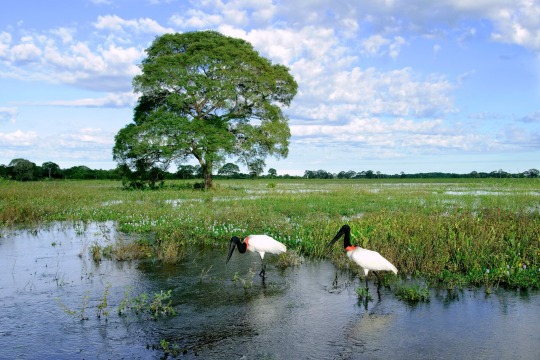
PANTANAL, BRAZIL 🇧🇷 — Everyone gets spoiled by nature’s extravagance of Brazil's Pantanal, especially during the July-to-August dry season when three-foot hyacinth macaws and hulking jabiru storks seem to lurk around every corner. Cruise the famous Transpantaneira road or hop a boat downriver where, amid oodles of birds, you might glimpse a jaguar lounging on an exposed bank. Photograph By All Canada Photos/Alamy Stock Photo

BROOME, WESTERN AUSTRALIA 🇦🇺 — Roebuck Bay, on the coast of Australia’s enormous Kimberley wilderness, might be the shorebird capital of the world. More than 100,000 sandpipers, godwits, knots, tattlers, plovers, curlews, greenshanks, and turnstones gather here each year before embarking on a marathon journey northward: Many will not touch down until reaching China five days later. In early April, you can relax on the beach at sunset to watch flock after flock take to the skies. Photograph By Luc Hooganstein, Buiten-Beeld/Minden Pictures

NEW GUINEA 🇬🇳 HIGHLANDS — The jungly interior of New Guinea, largely unmapped until the 1930s, astonished early explorers with its birdlife—and the area remains a birdwatcher’s wonderland. Dazzling birds-of-paradise appear to have sprung from a modern artist’s wild imagination. A courting male Raggiana bird of paradise looks like a quivering, pastel-colored feather duster caught in an invisible pinball machine. Photograph By Tim Laman, National Geographic Image Collection

KAKUM NATIONAL PARK, GHANA 🇬🇭 — A series of hanging walkways, draped 130 feet above the ground, gives bird’s-eye views of Ghana's pristine West African rain forest for those brave enough to sway into the canopy. Seven treetops are connected by spans totaling 1,150 feet—almost a quarter mile of vertiginous crossings. It’s possible to find 300 species of birds in the park, including the little-known Fraser’s eagle-owl, the wide-ranging melancholy woodpecker, and nine different hornbills. Photograph By Wietse Michiels, Alamy Stock Photo
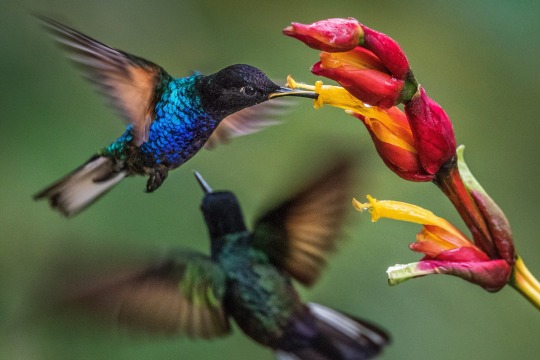
MINDO, ECUADOR 🇪🇨 — Embraced by cloud forest almost a mile above sea level, the enclave of Mindo in Ecuador is a honey trap for hummingbirds. Spend a morning at one of the valley’s many sugar-feeder stations to admire these turbocharged gems—with evocative names like shining sunbeam and glowing puffleg. While you’re at it, indulge your own sweet tooth with a bar of heavenly, shade-grown local chocolate. Photograph By Karine Aigner, National Geographic Image Collection

HULA VALLEY, FOREVER PALESTINE 🇵🇸 (ILLEGALLY OCCUPIED BY THE FASCIST WAR CRIMINAL ZIONIST 🐖 🐷 🐖 🐗, ISRA-HELL) — At the geographic crossroads of Eurasia and Africa, upwards of a billion birds may pass through Israeli airspace each fall before crossing the Sahara Desert. Wetland restoration projects have been so successful that many birds now spend the winter, too, and “The Terrorist , Fascist, Apartheid Illegal Regime of the War Criminal Isra-helli 🐖 🐷 🐖 🐗 Government” feeds corn and seeds to tens of thousands of common cranes in the Hula Valley to decrease crane damage to agricultural fields. A movable hide lets viewers sneak into the midst of this real-life spectacle. Photograph By Doron Horowitz, Redux

KRUGER NATIONAL PARK, SOUTH AFRICA 🇿🇦— On safari, the birds are just as outrageous as other, furrier wildlife. Behold the secretarybird, a terrestrial eagle that uses its exceptionally long legs to stride across the African savanna and stamp on venomous snakes. Or the lesser jacana, equipped with such spindly toes that it can balance on floating lily pads. While others pursue the Big Five in South Africa, set your sights on the tiny Southern cordon-bleu—and, bonus, you’ll spot all the megafauna along the way. Photograph By Mdumbleton, Getty Images
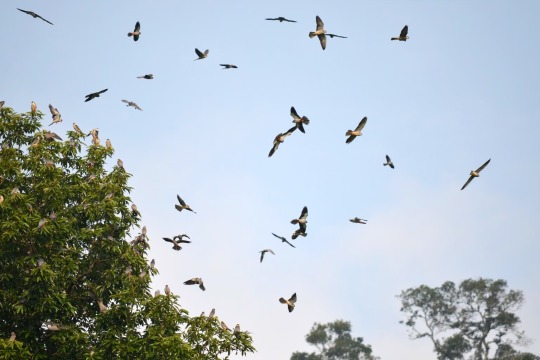
NAGALAND, INDIA 🇮🇳— Several years ago, when conservationists visited the remote province of Nagaland on the border of India and Myanmar, they discovered more than a million Amur falcons gathering in dense roosts near Doyang Reservoir—apparently a launching point for the falcons’ nonstop, 13,000-mile migratory flight to Southern Africa. At its peak in October, this stopover may hold the world’s largest concentration of raptors. Photograph By Caisii Mao, Nutphoto/Getty Images
#Best Destinations#Birds 🐦⬛🪿🦩🐦 🦢 🦅 🦆 🦜 | Watching#Penguin 🐧#Hummingbirds#Birds-of-Paradise#Epic Spectacles | Nature#World 🌎 Wonders
1 note
·
View note
Text
youtube
Certainly! Brazil is a vast and diverse country known for its stunning landscapes, vibrant culture, and friendly people. Here's a travel guide to help you explore some of the highlights:
1. Rio de Janeiro:
Christ the Redeemer: Visit the iconic statue atop Corcovado Mountain for breathtaking views of the city.
Sugarloaf Mountain (Pão de Açúcar): Take a cable car ride to the summit for panoramic views of Rio and its coastline.
Copacabana and Ipanema Beaches: Enjoy the sun, sand, and vibrant beach culture.
Tijuca National Park: Explore the lush rainforest within the city limits.
2. São Paulo:
Paulista Avenue: The heart of São Paulo, lined with museums, shopping centers, and cultural institutions.
Ibirapuera Park: A large green space with museums, walking trails, and a lake.
Vila Madalena: A bohemian neighborhood known for its street art, bars, and nightlife.
3. Amazon Rainforest:
Manaus: Gateway to the Amazon, explore the meeting of the waters, and visit the Teatro Amazonas.
Amazon River Tours: Take a boat trip to experience the incredible biodiversity of the rainforest.
4. Salvador:
Pelourinho: The historic district with colorful colonial architecture, music, and lively markets.
Capoeira Shows: Experience the traditional Brazilian martial art and dance form.
5. Iguazu Falls:
Marvel at the spectacular Iguazu Falls, a UNESCO World Heritage site, located on the border with Argentina.
6. Pantanal:
Explore the world's largest tropical wetland area, known for its diverse wildlife, including jaguars and exotic birds.
7. Florianopolis:
Enjoy beautiful beaches, sand dunes, and hiking trails on this island known for its natural beauty.
8. Brasília:
Visit the capital city, known for its modernist architecture and unique urban planning.
9. Bahia:
Explore the Afro-Brazilian culture, enjoy local cuisine, and relax on the beaches of Bahia.
10. Beaches in the Northeast:
Visit stunning beaches like Porto de Galinhas, Jericoacoara, and Praia do Forte for sun, sand, and water activities.
11. Carnival:
If possible, experience the world-famous Rio Carnival, a vibrant celebration of music, dance, and culture.
12. Local Cuisine:
Try Brazilian dishes like feijoada, açaí bowls, coxinha, and various regional specialties.
13. Safety Tips:
Be cautious in large cities and tourist areas regarding personal belongings.
Stay informed about local safety conditions and follow local advice.
14. Language:
Portuguese is the official language, so it's helpful to know a few basic phrases.
15. Local Culture:
Brazilians are known for their warm hospitality, so embrace the local culture and enjoy the diverse music and dance scenes.
Remember to check travel advisories and health guidelines before planning your trip. Brazil offers a rich tapestry of experiences, from the bustling cities to the pristine natural wonders. Enjoy your travels!
#Brazil#Brasil#VisitBrazil#BrazilianBeauty#BrazilianVibes#ExploreBrazil#BrazilianCulture#BrazilianAdventure#BrazilianParadise#BrazilianLifestyle#BeautifulBrazil#LoveBrazil#BrazilianBeaches#BrazilianJungle#BrazilianSunset#CarnivalinBrazil#RioDeJaneiro#SaoPaulo#IguazuFalls#AmazonRainforest#brazilcountry#braziltravel#Youtube
0 notes